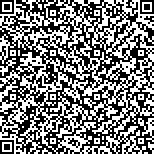| 引用本文: | 王爱民,王 嫣,顾志峰,黎 明,石耀华,李思发.马氏珠母贝(Pinctada martensii)2 个地理群体杂交子代的杂种优势和遗传变异.海洋与湖沼,2010,41(1):140-147. |
| |
|
| |
|
|
| 本文已被:浏览 3014次 下载 3306次 |

码上扫一扫! |
|
|
| 马氏珠母贝(Pinctada martensii)2 个地理群体杂交子代的杂种优势和遗传变异 |
|
王爱民1, 王 嫣2, 顾志峰2, 黎 明2, 石耀华2, 李思发3
|
|
1.上海海洋大学水产与生命学院农业部水产种质资源与利用重点开放实验室,海南大学海洋学院教育部热带生物资源重点实验室 海南省热带水生生物技术重点实验室;2.海南大学海洋学院教育部热带生物资源重点实验室 海南省热带水生生物技术重点实验室;3.上海海洋大学水产与生命学院农业部水产种质资源与利用重点开放实验室
|
|
| 摘要: |
| 采用马氏珠母贝的印度群体(II0)和三亚群体(SS0)的2×2 双列式杂交获得了4 组子代, II1(II0♀×II0♂)、IS1(II0♀×SS0♂)、SI1(SS0♀×II0♂)和SS1(SS0♀×SS0♂); 分析表明, 杂交组子代IS1和SI1 在壳高、壳长、绞合线长、壳宽、壳重上都表现出杂种优势; IS1 在壳宽指数上表现出杂种优势, 而在总重和壳重指数上未表现杂种优势; SI1 在总重和壳宽指数上表现出杂种优势, 而在壳重指数上未表现杂种优势; SI1 在壳高、壳长、绞合线长和壳重上的杂种优势较IS1 高, 差异极显著(P<0.01),而IS1 在壳宽上的杂种优势较SI1 高, 差异极显著(P<0.01)。应用6 个微卫星位点分析4 个组合子代的平均FST 值为0.357, 表明4 个组合子代间有较大的遗传差异和较高的分化水平; 平均等位基因数依次为SI1(6.17) > IS1(6.00) > II1(5.00) > SS1(4.67), 等位基因丰度依次为SI1(5.34) > IS1(5.04) >II1(4.47) > SS1(4.55), 期望杂合度(He)依次为IS1(0.55) > SI1(0.54) > SS1(0.44) > II1(0.42), 观察杂合度(Ho)依次为SI1(0.52) > IS1(0.46) > SS1(0.35) > II1(0.29), 杂交子代的杂合度和遗传多样性高于自繁子代, 杂交增加了杂交子代的杂合度和遗传多样性, 杂种优势与杂合度和遗传多样性增加直接相关;综合考虑杂种优势与遗传变异的结果, 确定三亚野生群体♀×印度养殖群体♂杂交组合作为“珍珠贝育种规划 POBs”的主要育种方式。
|
| 关键词: 马氏珠母贝, 地理种群, 杂种优势, 遗传变异, 微卫星 |
| DOI:10.11693/hyhz201001020020 |
| 分类号: |
| 基金项目:国家重点基础研究发展计划(973)项目, 2010CB126405 号、2009CB126005 号; 国家高技术研究发展计划(863)项目,2002AA603022 号; 国家自然科学基金资助项目, 30960295 号 |
附件 |
|
| HETEROSIS AND GENETIC VARIATION OF HYBRIDS FROM TWO GEOGRAPHICAL POPULATIONS OF PEARL OYSTER, PINCTADA MARTENSII |
|
WANG Ai-Min1,2, WANG Yan3, GU Zhi-Feng3, LI Ming3, SHI Yao-Hua3, LI Si-Fa1
|
|
1.College of Fisheries and Life Science, Shanghai Ocean University, Key Laboratory of Aquatic Genetic Resources and Aquaculture Ecosystem, Ministry of Agriculture;2.The Ocean College, Hainan University, Key Laboratory of Tropic Biological Resources, Ministry;3.The Ocean College, Hainan University, Key Laboratory of Tropic Biological Resources, Ministry of Education, Hainan Key Laboratory of Tropical Hydrobiological Technology
|
| Abstract: |
| A 2×2 complete diallel cross between two populations of pearl oyster, Pinctada martensii, from Indian (II0) and Chinese Sanya (SS0) was carried out and four groups of offspring, II1(II0♀×II0♂), IS1(II0♀×SS0♂), SI1(SS0♀×II0♂), and SS1(SS0♀×SS0♂), were produced. Hybrid IS1 and SI1 showed heterosis in shell height (SH), shell length (SL),hinge length (HL), shell width (SW), and shell weight (SWT). IS1 had heterosis in shell width index (SWI), but not in total weight (TW) and shell weight index (SWTI), while IS1 had heterosis in total weight and shell width index, but not in shell weight index. SI1 exhibited significantly larger heterosis in SH, SL, HL, and TW than IS1 (P<0.01), but significantly smaller in SW (P<0.01). Six selected microsatellite markers were used to analyze four lines of progeny. The results reveal that the FST was 0.375 and the average numbers of alleles were in the order of SI1(6.17) > IS1(6.00) > II1(5.00) > SS1(4.67); the average allelic richness per locus was SI1(5.34) > IS1(5.04) > II1(4.47) > SS1(4.55); the average expected heterozygosities (He) were IS1(0.55) > SI1(0.54) > SS1(0.44) > II1(0.42); and the observed heterozygosities (Ho) were SI1(0.52) > IS1(0.46) > SS1(0.35) > II1(0.29), indicating that the cross increased heterozygosity and genetic diversity, and directly brought about heterosis. As a whole, the cross between female Sanya wild population and male Indian cultured population promised more potential for pearl oyster breeding scheme, or POBs.
|
| Key words: Pinctada martensii, Geographical population, Heterosis, Genetic variation, Microsatellites |
|
|
|
|
|
